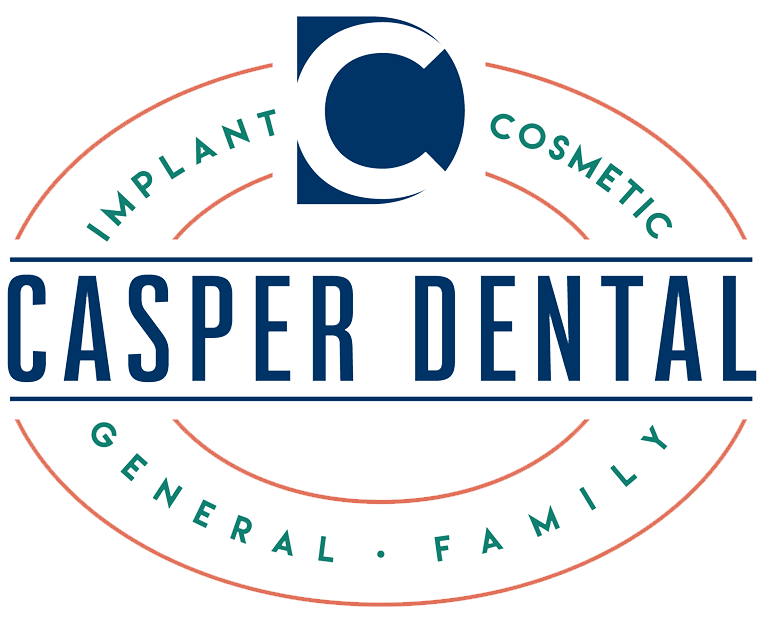When it comes to restoring a missing tooth or securing loose dentures, dental implants are a modern miracle in the world of dentistry. Many people in Richland seek the expertise of a Richland dentist to enhance their smiles and improve their overall oral health. Casper Family Dental, a tri-city family dental service is a trusted name in general dentistry services, and is at the forefront of dental implant procedures in the area. In this comprehensive guide, we will explore the stages of dental implants, shedding light on this transformative journey towards a confident smile.
Initial Consultation
The journey of dental implants begins with an initial consultation. During this crucial stage, your dentist will evaluate your oral health and discuss your candidacy for dental implants. They will review your medical history, perform a thorough examination, and may request X-rays to assess the condition of your jawbone. This comprehensive assessment ensures that your dental implant procedure is tailored precisely to your needs, and any potential challenges are identified and addressed early on. Your dentist’s expertise and attention to detail at this stage lays the foundation for a successful and confident smile transformation.
Treatment Planning
Once you’ve been deemed a suitable candidate, your dental professional will create a personalized treatment plan meticulously tailored to your unique dental needs. This plan outlines the specific steps required for your dental implant procedure. It includes details about:
- The type of implant: This decision depends on various factors, including the location of the missing tooth, the quality and quantity of your jawbone, and your overall oral health. Whether it’s an endosteal implant (placed directly in the jawbone) or a subperiosteal implant (resting on the jawbone), this choice is made with your long-term oral health in mind.
- The number of implants: The treatment plan will specify the number of implants needed to achieve your desired outcome. In cases of single-tooth replacement, one implant is usually sufficient. However, for multiple missing teeth or implant-supported bridges or dentures, the plan will detail the precise number and placement of implants required for optimal stability and functionality.
- Pre-treatment procedures: This can include bone grafting or sinus lifts to augment the jawbone’s strength and volume. These procedures are essential for patients with insufficient bone mass, ensuring that the implant has a solid foundation for long-term success.
The treatment plan will also include a proposed timeline for the entire dental implant process. It will provide estimates for each stage, from the initial consultation to the final restoration, so you have a clear understanding of what to expect and when.
At the conclusion of this step, your dentist will discuss this plan with you to ensure your comfort and understanding.
Dental Implant Placement
The surgical placement of dental implants is a pivotal stage in the implantation process, aimed at restoring missing teeth with precision and care. Typically performed under local anesthesia for patient comfort, this procedure involves several key steps. First, a small incision is made in the gum tissue, exposing the underlying jawbone. Subsequently, a precisely measured hole is drilled into the bone to accommodate the implant fixture, which acts as an artificial tooth root. This fixture is inserted with meticulous precision. Following this, the incision is closed with sutures, essential for both healing and protection of the surgical site. In some cases, a temporary crown may be placed to maintain the aesthetic appearance of the smile during the healing phase.
Osseointegration
Osseointegration, a critical stage in the success of dental implants, initiates the healing process and is paramount in establishing a firm foundation for your new tooth. This process involves the gradual fusion of the implant fixture with the surrounding jawbone, providing a stable foundation for your new tooth. While post-surgical discomfort such as swelling is common, it is typically manageable with prescribed pain medications and proper post-operative care. Regular follow-up appointments with the dental professional are crucial to monitor osseointegration progress, as it unfolds over several months. The exact duration can vary based on individual factors, including bone quality and overall health.
Abutment Placement
Once osseointegration is complete, your dentist will perform a minor surgical procedure to place an abutment on the implant fixture. The abutment serves as a connector between the implant and the final restoration, such as a crown, bridge, or denture. Impressions of your teeth are taken to create a custom-made restoration that will blend seamlessly with your natural teeth. This customized approach ensures a seamless integration of the new tooth or teeth into your smile, both in terms of aesthetics and functionality, ultimately culminating in a fully restored and confident oral appearance.
Final Restoration
With the abutment in place, it’s time for the final restoration. At this concluding step of the procedure, your dentist will attach the chosen prosthetic tooth or teeth to the abutment. The result is a lifelike tooth that matches the color, shape, and size of your natural teeth. This restoration not only looks natural but also functions like a real tooth- allowing you to eat, speak, and smile with confidence.
Post-Procedure Care
After the final restoration, your dentist will provide you with detailed instructions on post-procedure care. It’s essential to maintain good oral hygiene by brushing and flossing regularly, as well as attending follow-up appointments at your dentist for routine check-ups and cleanings. Proper care will not only relieve the discomfort you might feel, but will also ensure the longevity of dental implant.
A Perfect Smile Awaits!
With your dental implant firmly in place, you’ll experience a range of benefits. You can indulge in your favorite foods without worry, speak clearly, and smile with self-assurance. Dental implants from a reputable Richland dentist will offer a long-lasting solution for missing teeth that can enhance your overall quality of life.
And if you are struggling to look for one, then don’t forget to check out Casper Family Dental! From customized treatment plans to scheduled post-op appointments, we make sure to guide you at every step of this life-changing journey towards a beautiful smile!


